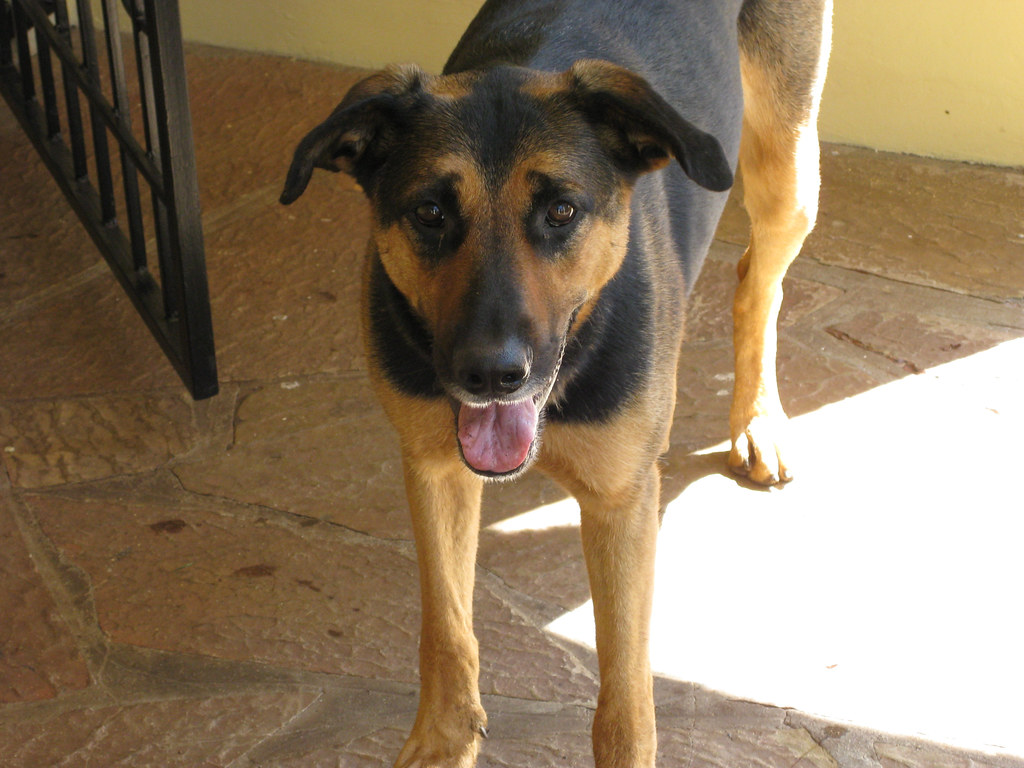30 Warning Signs Your Dog Is in Pain

Dogs have an incredible ability to mask their pain, a survival instinct inherited from their wild ancestors. While this may have been beneficial in the wild, it can make it difficult for us as pet owners to recognize when our furry friends are in distress. Pain can stem from a variety of causes, such as injury, illness, or chronic conditions, and knowing the subtle signs is crucial for early intervention. Here are 30 warning signs your dog is in pain.
Decreased Appetite

A sudden loss of interest in food is one of the first indicators that something may be wrong. Dogs in pain often avoid eating because discomfort can suppress their appetite. This could be due to oral pain, gastrointestinal issues, or systemic illnesses such as kidney or liver disease. Prolonged avoidance of food can lead to dehydration and malnutrition, exacerbating the underlying problem.
Whining or Whimpering

Vocalizations like whining, whimpering, or howling can be a dog’s way of alerting you to pain. These sounds may be occasional or frequent, depending on the severity of the discomfort. Pay attention to when the vocalizations occur—whether it’s during movement, while resting, or in response to touch. Dogs experiencing chronic pain may vocalize less but show other subtle signs. If your dog is whining persistently, it’s a strong indication that something is wrong and needs professional evaluation.
Panting Excessively

Panting is normal after exercise or in warm weather, but excessive panting when your dog is at rest can signal pain or stress. Dogs experiencing discomfort may pant as a coping mechanism or due to an elevated heart rate caused by their distress. Internal pain, such as that from organ issues or infections, often triggers this behavior. If panting is paired with other symptoms like lethargy or a refusal to lie down, immediate veterinary attention is needed.
Lethargy

Lethargy is a noticeable drop in energy levels. If your dog appears uninterested in walks, playtime, or interacting with family, it could be conserving energy due to pain. Illnesses such as infections, internal organ dysfunction, or joint issues like arthritis are common culprits. Persistent lethargy over several days is a major red flag that shouldn’t be ignored, especially if accompanied by other signs of discomfort.
Limping

Limping is one of the most obvious indicators of pain in dogs. It may result from a minor injury like a sprain or a more serious condition like ligament tears, fractures, or joint problems. Dogs might also limp intermittently if the pain is less severe but recurring. Carefully examine the affected limb for visible injuries, swelling, or tenderness. Avoid forcing movement and consult a vet to determine the best course of action.
Reluctance to Move

A dog in pain might be hesitant to perform everyday activities, such as climbing stairs, jumping onto furniture, or even getting up from a resting position. This reluctance often stems from joint or muscle pain, as seen in arthritis, hip dysplasia, or spinal issues. Dogs may also resist movement if they’re experiencing internal pain, such as abdominal discomfort.
Hiding

When dogs are in pain, they may retreat to quiet, secluded areas to cope with their discomfort. This behavior is rooted in survival instincts, as animals in the wild would hide when injured to avoid appearing vulnerable. If your typically social dog begins spending more time under furniture, in closets, or behind objects, it’s a strong indicator that something is wrong.
Excessive Licking or Chewing

Frequent licking or chewing at a specific area is often a sign of localized pain. Dogs may focus on a joint if they’re experiencing arthritis, on their paws if there’s an injury, or on their abdomen if they’re feeling internal discomfort. Over time, excessive licking can lead to sores or infections, exacerbating the problem. If you notice your dog obsessively targeting a particular area, inspect it for wounds, swelling, or other abnormalities and consult your vet.
Changes in Sleeping Patterns

Pain can disrupt your dog’s usual sleep cycle, making it harder for them to find a comfortable position. They may shift positions frequently, wake up more often, or appear restless during the night. Conversely, some dogs may sleep excessively as a way to cope with chronic discomfort. Take note of these changes, especially if they’re accompanied by difficulty lying down or getting up, as these are common in conditions like arthritis or internal pain.
Aggression or Irritability

Even the most gentle dogs can exhibit defensive behavior when in pain. Growling, snapping, or avoiding contact often signals discomfort, especially if the pain is exacerbated by touch. Dogs may also become less tolerant of other pets or children in the household. Be cautious when handling your dog during these times, as even minor pressure on a sore area can provoke a reaction. Persistent irritability is a clear sign that veterinary intervention is needed.
Trembling or Shaking

Shaking or trembling is not always due to cold or fear—it’s often a response to pain. Dogs with conditions such as abdominal distress, poisoning, or nerve pain frequently exhibit this behavior. Trembling can also occur with chronic pain from degenerative diseases or severe arthritis. Observe when the trembling occurs; if it happens during rest or is accompanied by other symptoms like vomiting or lethargy, it’s a serious concern requiring prompt attention.
Restlessness

A dog in pain might struggle to settle down, frequently changing positions, pacing, or circling the room. This restlessness often signals that they’re having difficulty finding a comfortable posture, especially if the pain is internal or affects their spine or joints. If your dog appears unable to relax and shows other signs of distress, such as whining or panting, they may be experiencing significant discomfort that needs to be addressed.
Drooling Excessively

Excessive drooling can be a symptom of oral pain, nausea, or even stress caused by discomfort. It’s particularly concerning if accompanied by pawing at the mouth, difficulty eating, or a foul odor, as these signs often point to dental infections or foreign objects lodged in the mouth. Poisoning is another potential cause and requires immediate attention. If drooling persists beyond normal levels, a vet visit is necessary.
Swelling

Swelling in any part of your dog’s body is a visible indicator of inflammation, injury, or infection. Common areas for swelling include the face, paws, and joints. Facial swelling might indicate an allergic reaction or dental abscess, while limb swelling could result from a sprain or fracture. Swelling that feels warm or painful to the touch is particularly concerning and should be evaluated by a vet without delay.
Changes in Posture

Pain can cause dogs to adopt unusual postures in an attempt to relieve discomfort. A hunched back often signals abdominal pain, while tucking the tail may indicate lower back or hip pain. Dogs with joint issues may keep their legs stiff or hesitate to sit. Pay attention to these subtle changes in body language, as they often point to specific areas of discomfort and help vets pinpoint the issue.
Crying When Touched

A dog that cries, yelps, or pulls away when touched in a specific area is likely experiencing localized pain. This could stem from an injury, inflammation, or internal organ discomfort. For example, touching the abdomen might cause pain if your dog has a gastrointestinal issue or pancreatitis. Similarly, flinching when you touch their back or legs could indicate spinal or joint problems.
Changes in Breathing

Pain can significantly impact a dog’s breathing patterns. Rapid, shallow breathing or labored breaths often indicate stress, discomfort, or internal pain. For example, abdominal pain may restrict their ability to take deep breaths, while chest pain could result from respiratory infections or heart issues. If your dog is breathing heavily at rest, with no obvious cause like exercise or heat, it’s a clear sign that medical attention is needed.
Loss of Interest in Play

Dogs in pain often lose their enthusiasm for toys, games, or social interaction. Pain can make physical activities like chasing a ball or tugging on a rope uncomfortable or even impossible. Even mental stimulation, like puzzles or commands, may seem unappealing to a dog in discomfort. If your usually playful dog becomes disinterested or withdrawn, it’s time to evaluate their overall health and look for additional signs of pain.
Vomiting or Diarrhea

Digestive disturbances, such as vomiting or diarrhea, can result from pain due to gastrointestinal issues, infections, or ingestion of something toxic. These symptoms can also be accompanied by signs of abdominal pain, such as pacing, panting, or a hunched posture. Persistent vomiting or diarrhea not only indicates potential pain but can also lead to dangerous dehydration. Immediate veterinary care is necessary, especially if there’s blood in the vomit or stool.
Difficulty Lying Down or Getting Up

Joint pain, arthritis, or muscle injuries often make lying down or standing up a challenge for dogs. They may take longer to lower themselves to the floor or rise stiffly, sometimes groaning in the process. Watch for hesitancy in transitioning between positions, as well as signs of stiffness after rest. These issues are especially common in older dogs and may require long-term management with medication or lifestyle adjustments.
Scratching Ears or Shaking Head

Excessive scratching at the ears or frequent head shaking can indicate pain caused by ear infections, mites, or foreign objects lodged in the ear canal. Left untreated, these issues can worsen, leading to intense discomfort or hearing loss. If your dog is tilting their head, pawing at their ears, or showing sensitivity when you touch the area, it’s time for a vet visit. Ear problems are often easy to treat but can become severe if ignored.
Holding a Paw Up

A dog holding a paw off the ground is usually trying to avoid putting weight on it due to pain. This could be caused by something as simple as a thorn stuck in their paw pad or as serious as a fracture, sprain, or nerve damage. Examine the paw for visible injuries, swelling, or foreign objects. If the issue isn’t immediately apparent or persists after cleaning and inspection, consult your veterinarian to rule out more severe problems.
Changes in Barking

A dog in pain may bark more frequently, less frequently, or with a different tone than usual. For instance, they may growl or whine in place of barking, or their bark might sound hoarse or strained. Changes in vocalization often reflect physical discomfort or stress. If your dog is barking excessively or in unusual circumstances, it could be their way of seeking your attention or expressing pain.
Excessive Shedding

Stress caused by pain can lead to excessive shedding, sometimes leaving noticeable patches of missing fur. Painful conditions like skin allergies, infections, or underlying illnesses can cause a dog’s coat to become dull, brittle, or thin. Check for redness, flaking, or sores on the skin, as these can indicate irritation or injury. If shedding continues alongside other signs of distress, consult your vet to determine the cause.
Eye Changes

Redness, swelling, squinting, or excessive tearing can indicate eye pain. Dogs with eye discomfort may also paw at their face or keep one eye partially closed. Conditions such as corneal ulcers, glaucoma, or conjunctivitis can cause severe pain and escalate quickly if untreated. If you notice changes in your dog’s eyes, act promptly to avoid long-term damage, including potential vision loss.
Frequent Coughing

Persistent coughing can indicate pain or irritation in the throat, chest, or lungs. It may result from respiratory infections, heart disease, or even tracheal collapse, all of which can cause significant discomfort. A dog coughing consistently throughout the day or in specific situations, like after lying down, should be evaluated for underlying conditions.
Stiffness After Resting

Stiffness that becomes apparent after a period of rest is a classic sign of arthritis or joint pain, especially in older dogs. Dogs may appear stiff when first rising, but the stiffness often improves slightly with movement as their joints loosen up. If the stiffness worsens over time or is accompanied by limping, reduced activity, or obvious discomfort, it may indicate worsening joint disease or an injury.
Weight Shifting

Dogs experiencing pain in a specific limb or part of their body may shift their weight to avoid putting pressure on the affected area. For example, they might favor one side while sitting or standing or hold a leg at an awkward angle. Weight shifting is a common response to joint, muscle, or ligament pain and should be evaluated to prevent further strain or imbalance.
Unusual Odors

Foul smells coming from your dog’s mouth, ears, or wounds can indicate infections or other painful conditions. For example, bad breath may signal dental disease or gum pain, while a strong odor from the ears often points to an ear infection. Wounds with an unpleasant smell are likely infected and require immediate cleaning and treatment. Odors that persist despite basic care should always be investigated by a veterinarian.
Changes in Facial Expression

Dogs in pain often display subtle changes in their facial expressions. This can include squinting, furrowed brows, tight lips, or a glazed look in their eyes. They may also appear more fatigued or have a “sad” look that’s unusual for them. Pain-related facial expressions are often accompanied by other behavioral or physical changes, so be sure to look for additional signs of distress to get a complete picture of your dog’s condition.





